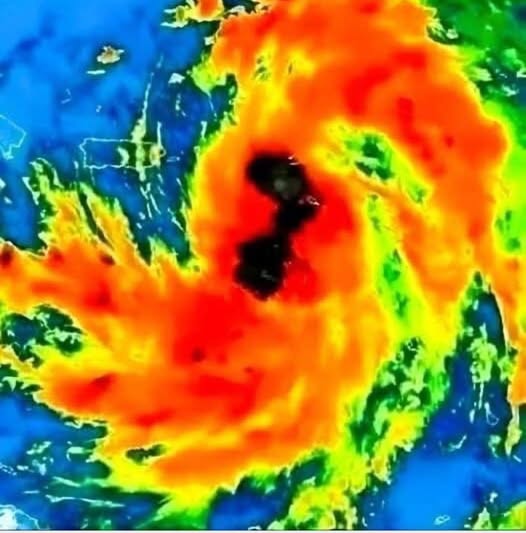Extreme weather is battering the Caribbean and the southeastern United States simultaneously, creating a week so chaotic that even experienced meteorologists are struggling to keep up. This isn’t just one crisis — it’s several overlapping events, each making the others worse, hitting communities that were already vulnerable. Earthquakes, floods, thick dust, and brewing storms are converging across the region, compounding the risks everywhere.
It began with an earthquake near Trinidad. Not a city-flattening quake, but strong enough to shake nerves and remind people how fragile life can feel during an active storm season. Families rushed outside, phones lit up with urgent calls, and social media flooded with videos of swaying walls and hanging light fixtures. While the damage wasn’t catastrophic, the anxiety arrived at the worst possible moment — right as the region faces one weather disaster after another.
In Central America, flooding has become relentless. Streets are rivers, neighborhoods are islands, and entire communities are submerged in brown, debris-filled water. Families are being rescued by fishing boats, makeshift rafts, or even doors ripped from their homes. Emergency teams work around the clock, wading through waist-deep water, rescuing people from rooftops and trees, all while exhaustion mounts and the rains continue. Bridges have collapsed, roads are washed out, and power outages stretch for miles. The situation was already severe; now it’s spiraling.
Adding to the chaos, a massive Saharan dust plume is covering the Caribbean — a thick, chalky haze that blurs the horizon and makes breathing difficult. Cars, crops, boats, and homes are coated in fine sand. Health officials warn residents with asthma or respiratory issues to stay indoors. The air is dry, gritty, and oppressive. Visibility is dropping, flights are facing delays, and people venture outside only when necessary, often with masks or cloth covering their faces.
Meanwhile, the ocean is restless, fueling trouble. Meteorologists are monitoring Tropical Storm Flossie along with other systems in the Atlantic. Warm waters give storms extra energy, and wind patterns may allow them to intensify quickly. Every update warns of heavy rain, flash floods, landslides, strong winds, and storm surges that could push seawater far inland. Communities in the Caribbean and U.S. Southeast are familiar with these threats, but familiarity doesn’t make them any less dangerous.
The real danger this week is the overlap. One storm alone is challenging. An earthquake alone is dangerous. Dust, flooding, collapsing infrastructure — each is serious. But when all occur together, the risk multiplies. Emergency responders are stretched to the limit. Hospitals juggle multiple crises: asthma attacks triggered by dust, injuries from floods, dehydration cases, and now preparations for storm-related emergencies. Some clinics operate on generators. Pharmacies report shortages of basic medication. Shelters fill with people escaping floods even as storm warnings loom.
Communication networks are also strained. Phone lines are spotty. Some areas can’t call for help because towers are underwater or damaged. Online updates are slow due to outages and power cuts. This cascading effect leaves people vulnerable not only to the weather but also to the collapse of essential services.
Local authorities are urging calm while warning of real danger. Residents are advised to stay alert, follow weather updates, and prepare for multiple scenarios. In flood-prone areas, families pack go-bags with documents, medicine, water, flashlights, and chargers. Coastal communities clear drains and check evacuation routes. Dust-affected regions seal windows, run air purifiers, and wear masks outside. Neighborhood volunteer groups assist the elderly and help transport supplies to stranded families.
Volunteers have become essential. Fishermen rescue people with boats. Off-duty firefighters clear roads. Community kitchens feed those unable to cook due to outages. Churches and schools open as temporary shelters. Where government aid is delayed, neighbors step up, relying on the resilience and solidarity Caribbean and southern communities have built through decades of hurricanes.
Yet uncertainty remains. Meteorologists warn that in the coming days, storms can change direction, intensify, or stall. Floodwaters can rise overnight. Earthquakes may have aftershocks. Dust plumes can shift with a single gust of wind. No one knows exactly how these hazards will interact.
Still, people are preparing as best they can: stocking water, charging batteries, cleaning gutters, filling gas tanks, securing outdoor objects, and monitoring weather apps. Those who’ve lived through past disasters — Maria, Irma, Katrina, Harvey — know how quickly a “watch” can become a full-blown emergency.
The next week is unpredictable, but the message from officials and experts is consistent: stay informed, stay ready, and help those around you. When crises pile up, preparation and community support can mean the difference between survival and disaster.
For now, the region waits — eyes on the sky, the sea, and the shifting dust — hoping for calmer days while preparing for whatever comes next.
